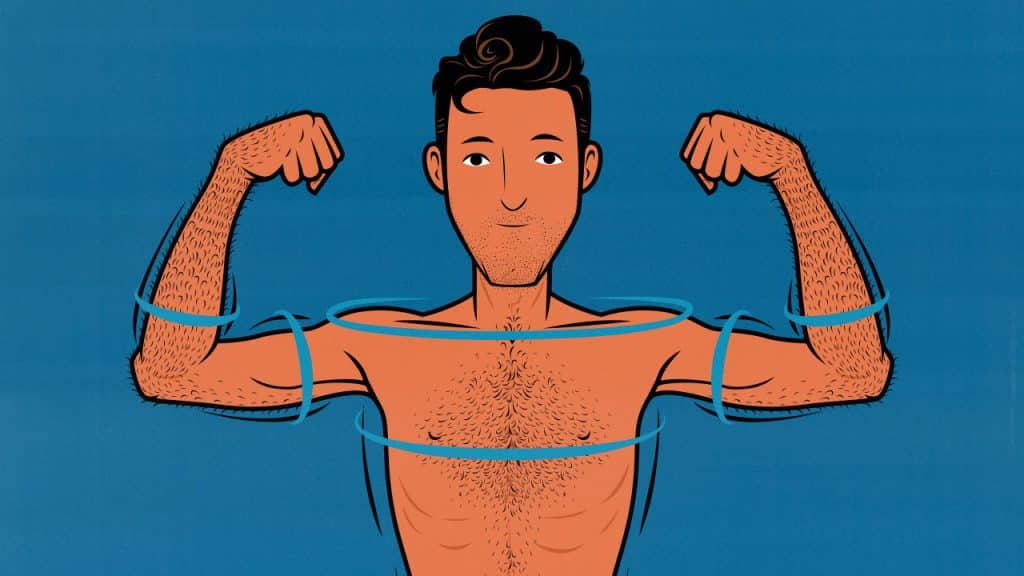
Does Flexing Build Muscle? Yes, But It’s Not What You Think
I came across this fascinating story about Charles Atlas years ago when I was writing an article about training for muscle size. If you don’t know, we’re a muscle-building site for skinny guys, and Charles Atlas was the first person to mass-market a workout program specifically designed to help skinny guys bulk up.
His story is much more interesting than I expected. First of all, it’s a flexing program. You buy the guide, and then you do a flexing routine at home. The “dynamic resistance” from flexing is supposed to stimulate muscle growth. There’s nothing wrong with that idea in theory, but does it actually work?
There have been studies measuring muscle growth from flexing, too. We can look at the results of a recent one.
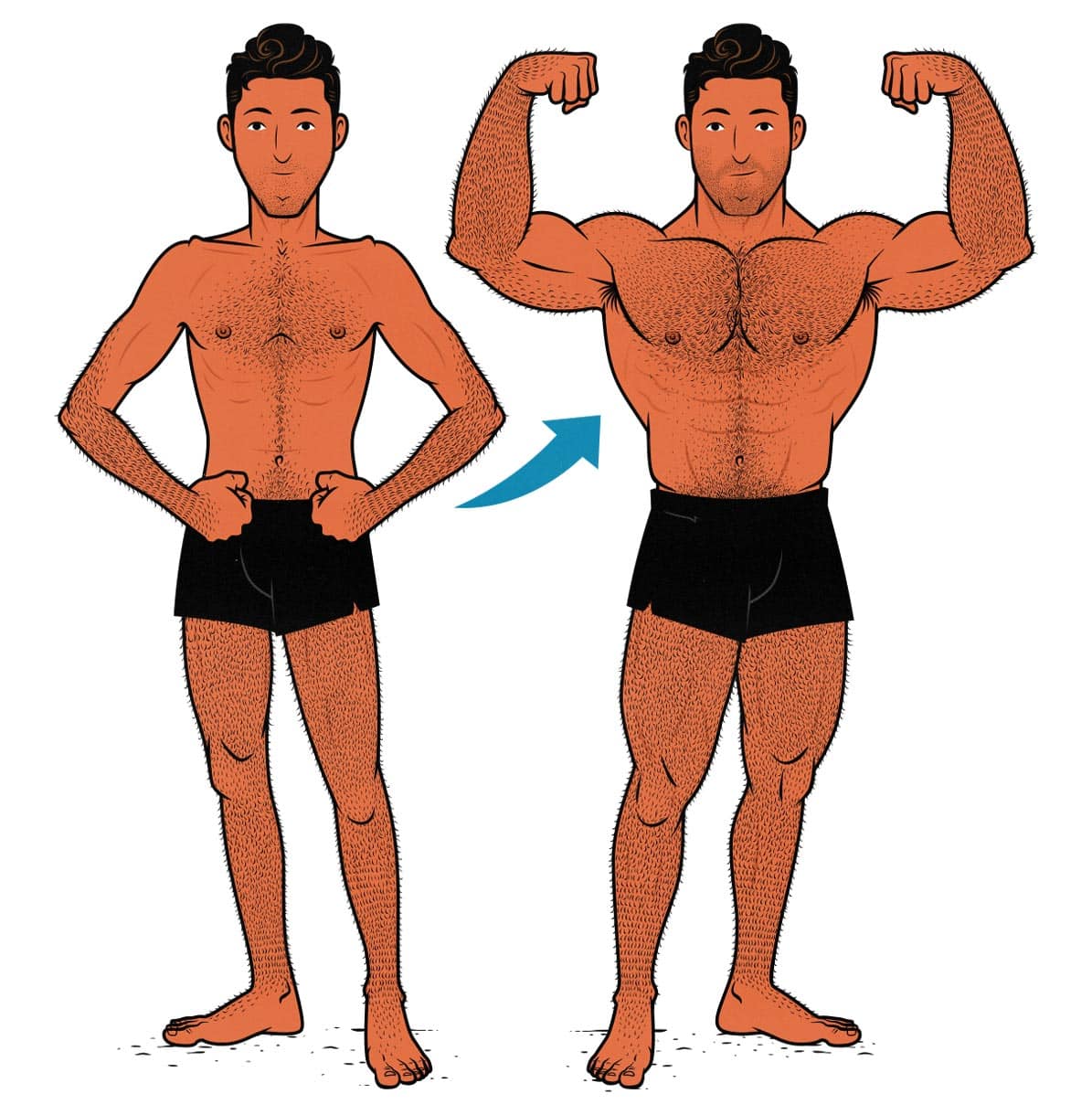
The First Muscle-Building Program for Skinny Guys
The story begins in the 1920s. That’s when Charles Atlas came up with the first muscle-building program for skinny guys. This was back in the good old days, back before the word “ectomorph” was coined, long before skinny guys even knew they could build muscle.
The problem was, even in the 1920s, skinny guys were sick and tired of being sick and tired. They wanted to gain muscle and strength. They were desperate to find a way to bulk up.
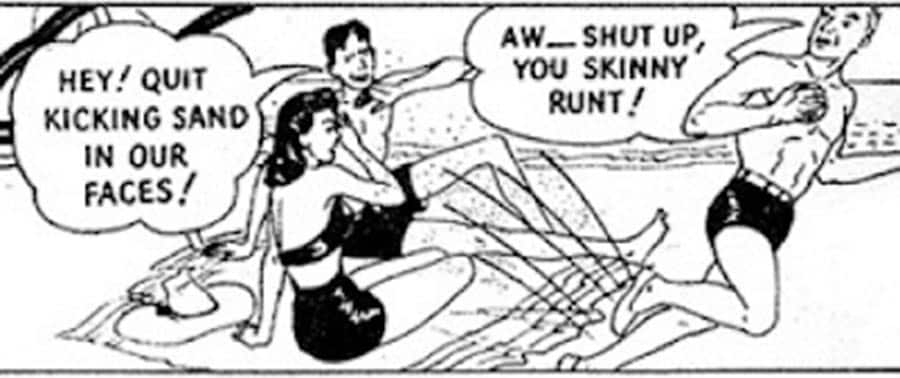
Charles Atlas saw an opportunity in our misfortune. He designed a workout program called the Dynamic Resistance Fitness Course. He put advertisements in all the magazines, calling out to all the “98-pound weaklings” getting “sand kicked in their faces.”
Best of all, you could do the entire program from the comfort of your very own home. All you needed to do was callisthenics combined with his special Dynamic Tension method, where you flex your muscles, “pitting muscle against muscle.” He wasn’t wrong. When you flex your arms, it does create tension. That tension can, at least hypothetically, stimulate muscle growth.

Think of what happens when you flex your arms. Your biceps and triceps fight against each other. If you flex hard enough, they may even quiver. If you flex long enough, your arms will get tired. So you rest, and you do it again the next day.
As your muscles grow stronger, they can exert more force upon each other, increasing the challenge. Progressive overload is built right into the workout routine.
When I was 6’2 and 130 pounds, I would have bought this program. This is exactly what I was dreaming of. This is exactly the kind of guide I was buying.
Is Flexing Really Enough to Build Muscle?
Here’s where the story gets interesting. Around the same time Charles Atlas began marketing his muscle-building program, Bob Hoffman was writing guides about how to build muscle by lifting weights. In 1932, he founded York Barbell and began manufacturing those weights himself.
Hoffman was strong, but Atlas was even bigger (photo below). This made Hoffman suspicious. He didn’t believe Atlas had built his physique just by flexing his muscles. Atlas looked like a lifter. Surely, this whole flexing thing was just a marketing ploy.
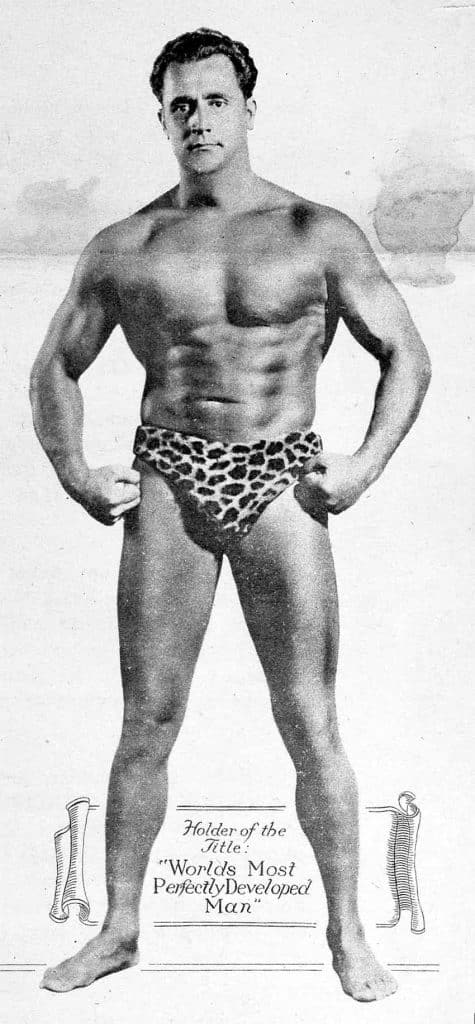
However, when Hoffman accused Atlas of secretly lifting weights, Atlas insisted he had built his body with his own unique training methods. Hoffman called Atlas a fraud and brought him to court.
On the stand, Atlas insisted that he really did do his callisthenics and flexing routine every day. That wasn’t quite what the lawyers were asking, though. They pressed him, asking if he also lifted weights.
Atlas was forced to admit that, yes, he did lift weights occasionally, but only to “test his strength.” The lawyers pressed him further, asking how often he tested his strength. Atlas said he tested his strength 3–4 times per week. He had built his muscles with conventional weight training.
The Research on Flexing & Muscle Growth
Just because Atlas lifted weights doesn’t mean flexing can’t stimulate muscle growth. Maybe both methods work. Maybe all that extra flexing was the reason Atlas was bigger than Hoffman. Fortunately, there’s some research we can look at.
In a study by Maeo and colleagues, the researchers split the participants into a control group and a flexing group (study). They took measurements of everyone’s arms at the beginning of the study and again 3 months later. By the end of those 3 months, the control group didn’t gain any muscle, whereas the flexing group increased their bicep and tricep size by 4%.
A 4% increase in muscle size isn’t bad! It doesn’t compare very well to lifting weights. You can build muscle much faster by doing bicep curls and tricep extensions, but even so, it’s quite impressive. If these guys had started with 13-inch arms, you could imagine them finishing with 13.5-inch arms. Not bad at all.
The average skinny guy doing our bulking program increases his arm size about twice as fast as that, but even so, 4% is good. You can indeed build muscle by flexing your arms. At least a little bit. At least for a while.

Conclusion
Flexing can build muscle. The tension you create can stimulate muscle growth, especially if you’re a skinny beginner. However, I suspect your results would soon plateau. You’d be better off doing proper bodyweight workouts, focusing on exercises like push-ups and chin-ups. If you’re doing enough of that, I’m not sure the extra flexing would help.
For example, I’ve been lifting for over a decade now. Whenever I glance at myself in the mirror, I flex my right arm. Even after all these years, that flexing hasn’t given me anything. My right arm is the same size as my left. They both grew from 10 inches to 16 inches as I gradually gained 60 pounds.
If you’re really serious about building muscle, Hoffman had the most effective approach. Lifting weights is popular for a reason. Investing in the extra equipment really does make building muscle easier. It doesn’t take much. All you need to get great results is a pair of adjustable dumbbells.
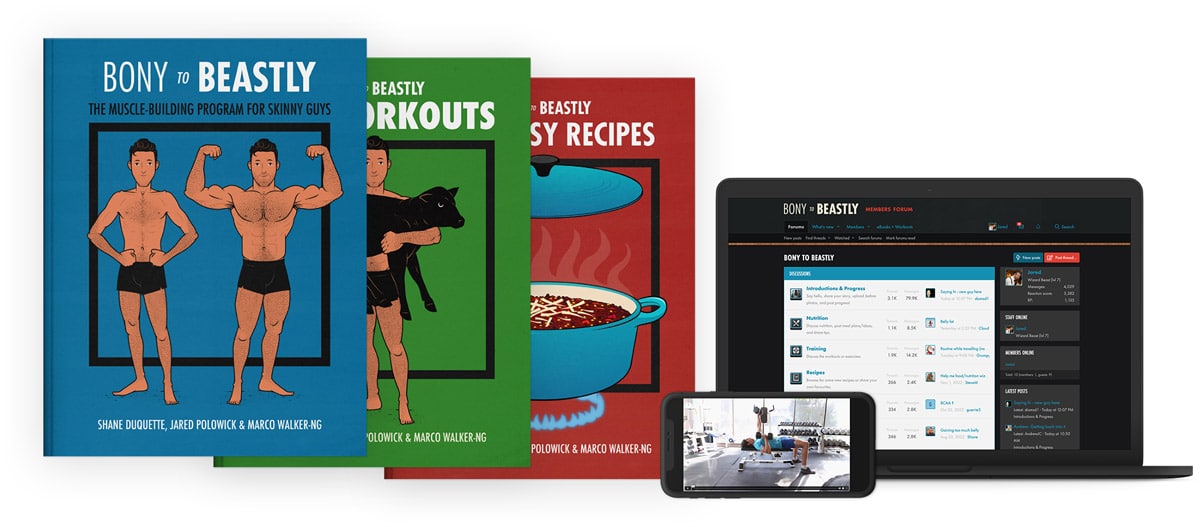
Alright, that’s it for now. If you want to know the ins and outs of bulking up, we have a free newsletter. If you want a full muscle-building program, including a 5-month workout routine, a bulking diet guide, a gain-easy recipe book, and online coaching, check out our Bony to Beastly Bulking Program. Or, if you want a customizable intermediate bulking program, check out our Outlift Program.

